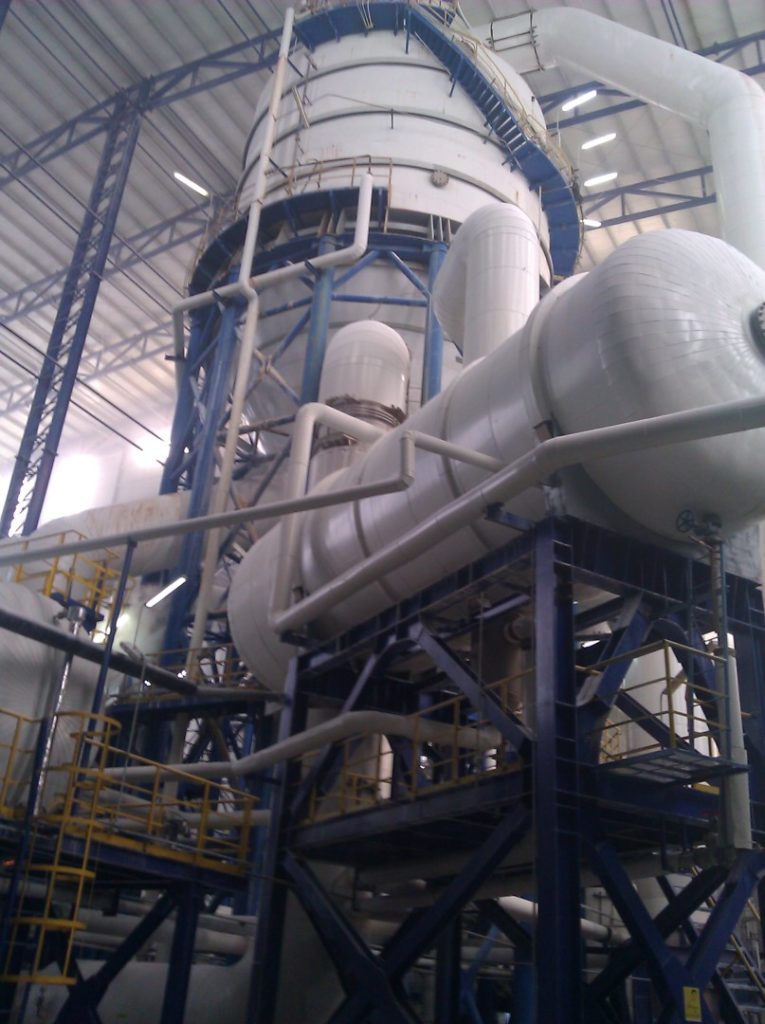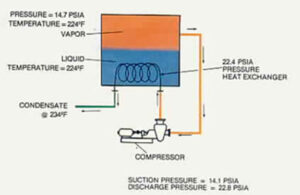Mechanical Vapour Recompression (MVR) Evaporator
Engineering and Manufacturing Evaporators for Chemical Process Industries

MVR Evaporator
Based upon a 75% isentropic (adiabatic, reversible) compressor efficiency and a combined electric drive motor and gear reducer efficiency of 92%, the energy required to compress a single pound of vapour from 14.1 to 22.8 psia is only 49.3 BTU. To produce the equivalent steam from one pound of 234°F evaporator condensate requires 999 BTU. Therefore, the energy savings for a recompression evaporator are highly competitive with those of multiple-effect evaporators and depend upon the compression pressure ratio required and the relative cost of electric power and steam.
The compression ratio required is comprised of three components which are:
- The boiling-point rise, i.e., the temperature of the boiling liquor minus the temperature of boiling water at the same pressure
- The Delta-T required for heat transfer
- The pressure drop in the vapour pipe to and from the compressor
Mechanical recompression is most practical for low Delta-T’s (larger heat-transfer areas) and low boiling-point elevations.
Shown above, is a simplified flowsheet for a single-effect recompression soda ash evaporator which has replaced the traditional triple-effect evaporators used for this application. The vapour body shown has the alternate Swenson vertical-inlet baffle design, which has proven to be effective in minimizing short-circuiting. Vapour from the body is compressed with a single-stage centrifugal compressor and condensed in the vertical heat exchanger. Condensate is sprayed into the vapour discharged from the compressor to reduce super-heat. Some make-up steam is required to supplement the mechanical energy from the compressor. For some applications, make-up steam is not required.
Most submerged-inlet evaporators short circuit. That is, some of the heated liquor which enters the vapour body short circuits to the outlet instead of rising to the boiling surface. The boiling temperature of the liquor is increased above the equilibrium value (denoted as degrees of short-circuiting), which decreases the Delta-T available for heat transfer. It is particularly important to minimize short-circuiting in recompression evaporators because short-circuiting increases the compression ratio required, thereby increasing power consumption.
